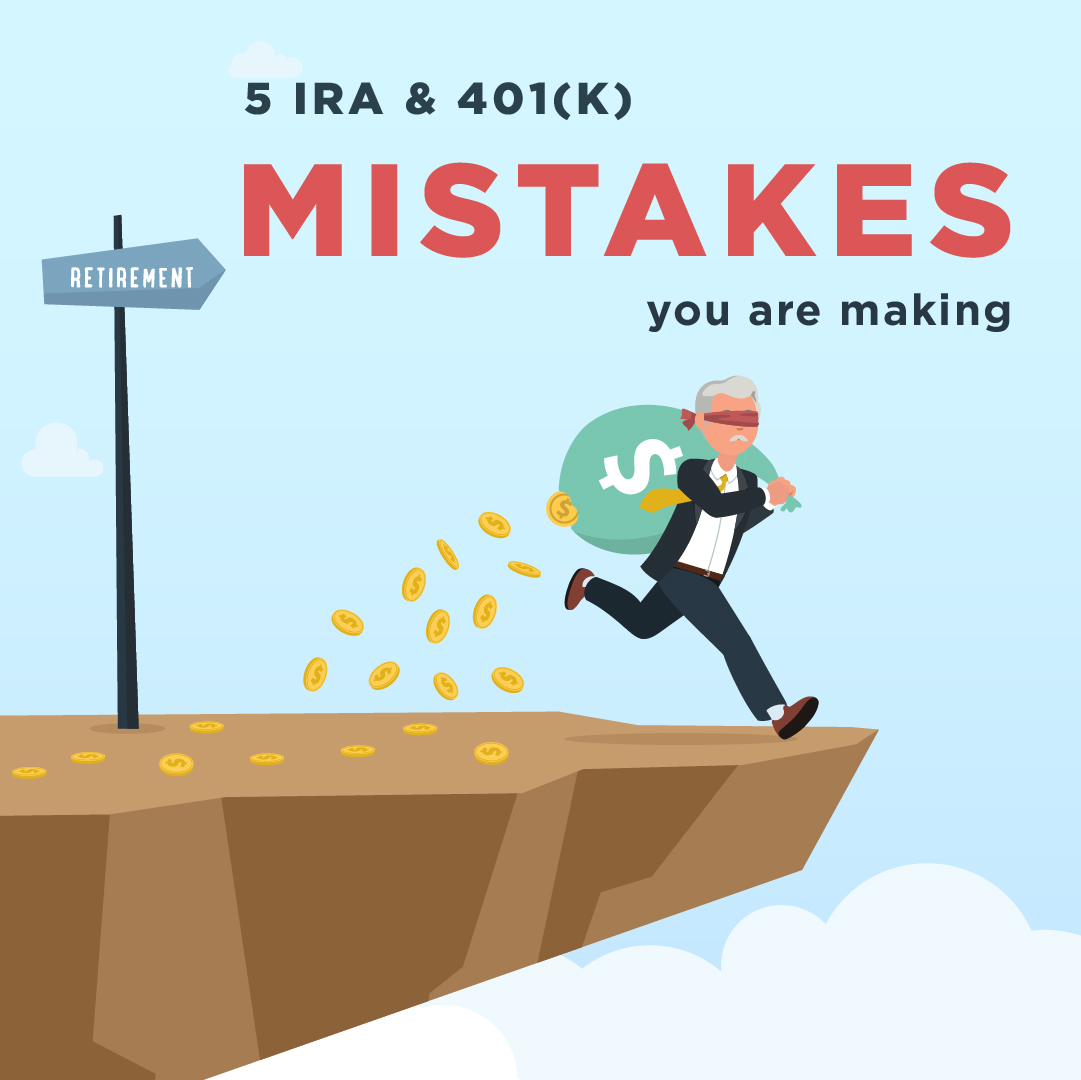Every American dreams of retiring someday. But retiring, and particularly retiring in comfort, isn’t something that just happens by chance. Preparing for retirement requires careful and meticulous planning, goal-setting, and dedication to the plans you have laid out for yourself.
If preparing for retirement were easy, no one would have to fret about it. But even the most carefully laid plans can be undermined by commonly made but easily avoidable mistakes. No one wants to look back on a lifetime of saving and investment and wish that they had made their decisions differently. Careful retirement planning and preparation can help you avoid making common retirement mistakes.
Why It’s Important to Invest for Retirement
The cost of living increases every year, with food, housing, and medical care becoming ever more expensive. If you don’t start preparing for retirement well before it’s time to retire, you could very well find yourself starting off retirement with far less money than you’ll need. Planning for retirement needs to start as early as possible, so that you can built up your retirement nest egg to the levels you’ll need to enjoy your retirement years.
There are many ways you can save and invest for retirement. From savings accounts to IRAs to 401(k) plans, your options are many. And the number of assets you can invest in is almost limitless. However, each of these investments comes with its own set of rules, regulations, and investing strategies. In the following sections, we’ll explore some of the most common retirement planning mistakes you must avoid in order to protect your assets and set yourself up for success in your retirement years.
5 Retirement Planning Mistakes You Must Avoid
Planning for retirement requires long-term strategic thinking. Investing can be tricky, and many investors approach their retirement years not understanding the rules and strategies that must be followed to ensure a comfortable retirement. Here are the top 5 mistakes to avoid when preparing for retirement.

1. Lack of Portfolio Diversification
Portfolio diversification means that you aren’t putting all of your eggs in one basket. You may hear stories every now and then of someone who plowed all their money into Microsoft or Amazon or some other stock that really took off. They may have made a lot of money, but that was the result of good luck, not sound investing. For every story like that, there are 10 or more of investors who put all their money into what they thought was a surefire winner, only to lose all their money.
A properly diversified portfolio protects investors against investment losses. Every investor will lose money at some point, but a well-diversified portfolio will help investors minimize losses.
Diversification doesn’t just mean getting a good mix of stocks and bonds, either. It means mixing things up by investing across different sectors, in different geographic areas, and gaining exposure to alternative investment assets such as real estate, precious metals, and commodities.
2. Early Withdrawal from Retirement Accounts
It’s important to remember that retirement accounts are for retirement. They’re not piggy banks that you can raid at any time if you need quick cash. Not only will you have to pay taxes on early distributions from retirement accounts, but you may also have to pay penalties. And of course, withdrawing money before you retire means that you’ll have less money left when you do retire.
This is where portfolio diversification also plays a role. Instead of putting all of your retirement savings into standard tax-advantaged accounts such as 401(k)s and IRAs, consider additional saving and investment vehicles such as brokerage accounts, Roth IRAs, or money market funds.
If your 401(k) or IRA investments aren’t performing as well as you like, resist the urge to liquidate them. With a 401(k) rollover, you can move funds from a 401(k) account to an IRA account with no tax consequences. That allows you to move assets from poorly performing investments into assets such as gold and silver without triggering onerous taxes and penalties, and while still retaining all the same tax advantages of an IRA.
3. Not Planning for Market Losses
What goes up must come down. Everyone knows that principle, but few want to apply it consistently, particularly when it comes to their investments. When stock markets are rising, everyone wants to think that they’re going to the moon. Then when the downturn sets in, they deny it until it’s too late.
Failing to anticipate market losses can happen to even the savviest of investors. But failing to plan for those losses, which are all but inevitable, can exacerbate the effects of those losses. Those who fail to plan for losses could end up sustaining losses that can wipe out years of investment gains, making it that much harder for them to get back on track to retire.
Planning for losses when preparing for retirement means ensuring that your portfolio is properly diversified, staying on top of your portfolio and mixing up investments when it becomes necessary, and working with a financial adviser or financial planner who shares your goals and can assist you in making your dreams of retirement come true.
4. Inaccurate Calculation of Retirement Needs
Pop quiz: how much money will you need for retirement? It all depends. But for many people today it might take a million dollars for them to be able to live comfortably in retirement. Just add up all the expenses you expect to pay each year in retirement, multiply that by the number of years you expect to live after retirement, which could be 20 or more, and then add at least 25-35% to account for inflation. The number you come up with just might shock you.
Many people may realize after performing those calculations that they don’t have nearly enough money saved up to last them through retirement. Nor do they have a way to make up the shortfall between what they have and what they need. But preparing for retirement means being aware of how much the lifestyle you want will cost you in retirement, and then planning, saving, and investing accordingly.
5. Not Making Strategic Required Minimum Distributions
When investors turn 72, they are required to start taking required minimum distributions (RMDs) from retirement accounts such as 401(k)s and traditional IRAs. Investors have to calculate for themselves how much money they are required to withdraw each year. Failure to take the minimum amount required will result in having to pay additional penalties.
RMDs are taxed at ordinary income tax rates, which can increase your amount of taxable income. Taking strategic distributions before you turn 72 can help decrease your RMD amounts, which can save you tax payments in the future. But in any case, you’ll want to consult with a tax adviser familiar with IRA rules to ensure that you don’t pay any more in taxes than you need to.
Prepare for Retirement by Investing in Precious Metals
Preparing for retirement may not be the easiest thing in the world, but it doesn’t have to be super difficult either. With the right amount of planning, the right mix of assets, and the right amount of diligence and patience, anyone can bring their retirement dreams to reality. Download the 10 IRA & 401(k) Mistakes You are Making eBook to learn more about retirement investing solutions.
Planning for retirement doesn’t require you to go it alone, either. The experts at Goldco have years of experience helping investors just like you figure out how investing in gold, silver, and other precious metals can help them diversify their investment portfolios and minimize their future investment losses. Contact Goldco today to find out how you can make gold and silver a vital part of your retirement plan.
This article was originally posted on Goldco.





